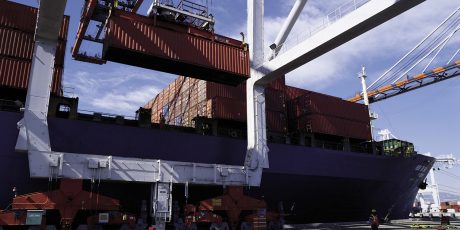
Blockchain: a new paradigm for supply chain security? Part 2
In the first part of this blog series, we explored why and indeed how blockchain could be used to improve security across the global supply chain. Now in this, the second part, let’s delve into the benefits and the pitfalls, and look at the progress made in this area to date.
Benefits
The appeal of blockchain to the various legitimate players in the supply chain is clear. For the first time, each link would have a truly reliable way of ensuring goods received are exactly what they seem. With blockchain, the complete journey of goods and each pair of hands they passed through, each facility they were stored in and each vehicle they were transported in will be recorded.
Not only will the provenance of goods be assured, with blockchain providing a solid audit trail, but analysis of the supply chain to identify efficiency and productivity improvements will finally be a worthwhile exercise. This explains why, according to recent research by Deloitte, 42% of executives in the consumer products and manufacturing industry, plan to invest $5m or more in blockchain technology in 2017.
“42% of consumer products/manufacturing executives plan to invest $5m or more in blockchain technology in 2017”
Deloitte
Pitfalls
Despite the obvious and very logical appeal of blockchain for the supply chain, there are a number of barriers to its widespread adoption. There have been many other technology-based solutions to improve supply chain security, including RFID at package or even item level, which could have driven improvements a decade ago, yet a piecemeal take-up has neutralised their effectiveness.
A lack of commonly accepted standards for blockchain development appears to be the key factor holding back progress. The Deloitte research also found that over half of respondents (56%) see implementation of a common technical standard as being the tipping point.
In January 2017, a consortium of industrial heavyweights including Cisco, Bosch and Bank of New York Mellon, began working with a number of start-ups and announced it is working on a protocol to facilitate just this for the supply chain.
Just how close are we to seeing blockchain deployed across the global supply chain?
There are a number of supply chain projects underway right now, including:
- Logistics – The Port of Rotterdam, one of Europe’s largest shipping ports, announced in 2016 that it is taking part in a logistics-focused blockchain consortium involving 15 public and private sector Netherlands-based firms. Consortium members will spend the next two years designing and developing applications for blockchain technology focused entirely around the logistics sector to improve security and efficiency.
- Shipping – Maersk, working with IBM, is using blockchain technology to streamline the global shipping process, including replacing traditional bills of lading and integration with customs authorities, designed to make it much more difficult for criminal gangs to intercept containers in transit.
- Food safety – Retail giant Wal-Mart has begun a pilot project to leverage distributed ledger technology to track and trace pork in China and produce in the US, two of its high-volume product categories with large markets. The four-month project aims to assure the quality of goods as well as improve supply chain efficiency and reduce waste.
- High-value goods – Also in 2016, IBM began offering a service that allows its customers to test blockchain in a secure cloud environment and track high-value items through complex supply chains. An initial publicised use case was to drive transparency into the diamond supply chain, a market synonymous with illicit practices, including slave labour and violence.
Blockchain certainly offers some exciting possibilities to fix some of the persistent security issues associated with the global supply chain, yet the technology alone will not wipe out the many risks associated with the industry. Apart from anything else, the complexity of transporting goods via multiple players and the returns for criminals are simply too great.
However, a standard, interoperable blockchain, particularly when combined with other technologies such as RFID does have the potential to make the global supply chain a much safer place to operate. A more secure supply chain will benefit businesses, in particular manufacturing businesses, their suppliers and customers and ultimately consumers.
For more information on Cisco’s approach to securely connecting the supply chain, visit our website.
This blog is extracted from an article first published by The Manufacturer (April 2017)
Tags:



